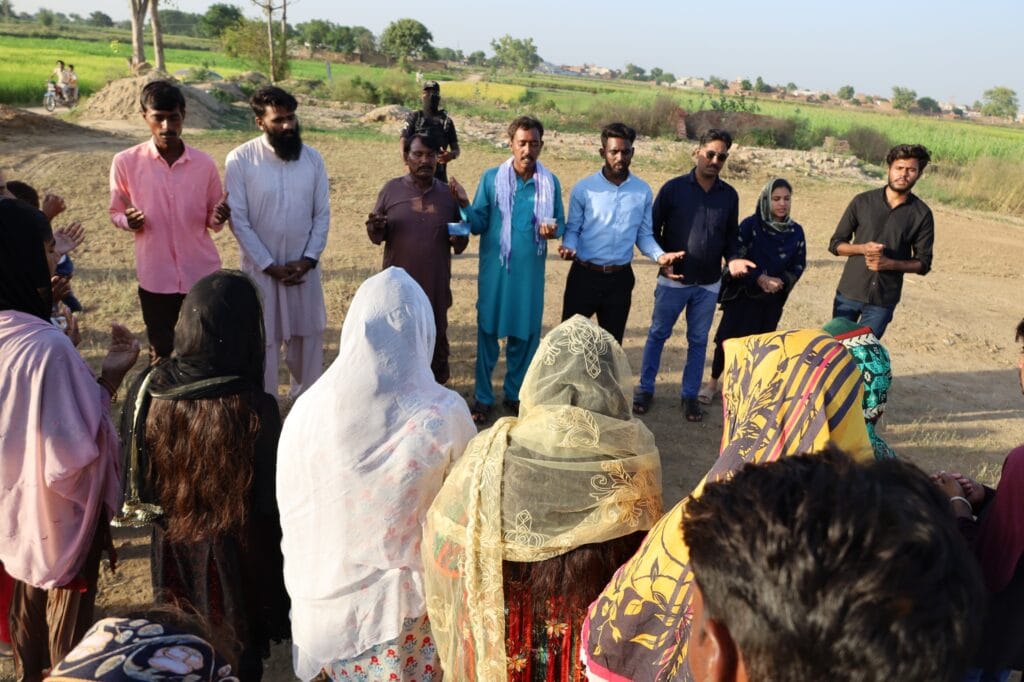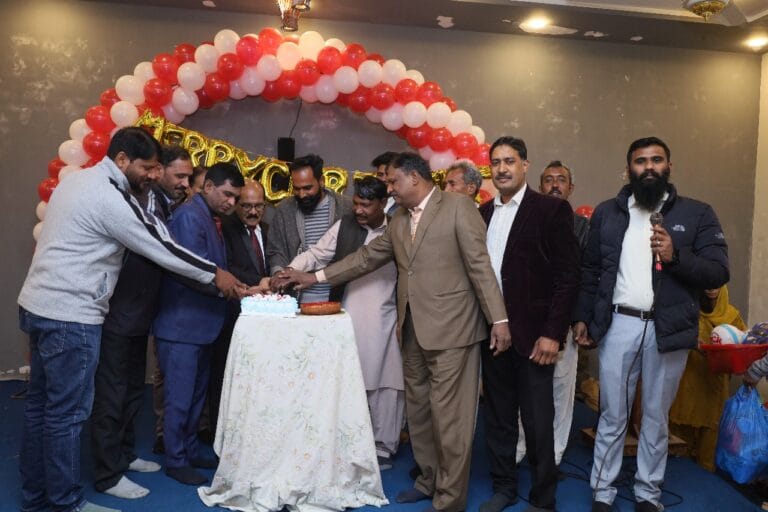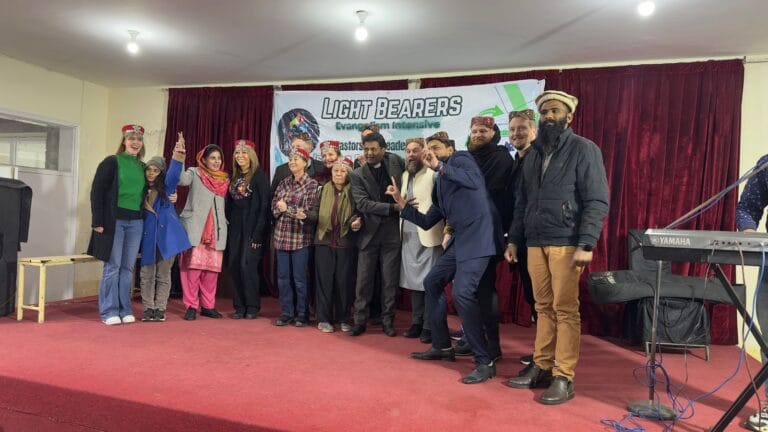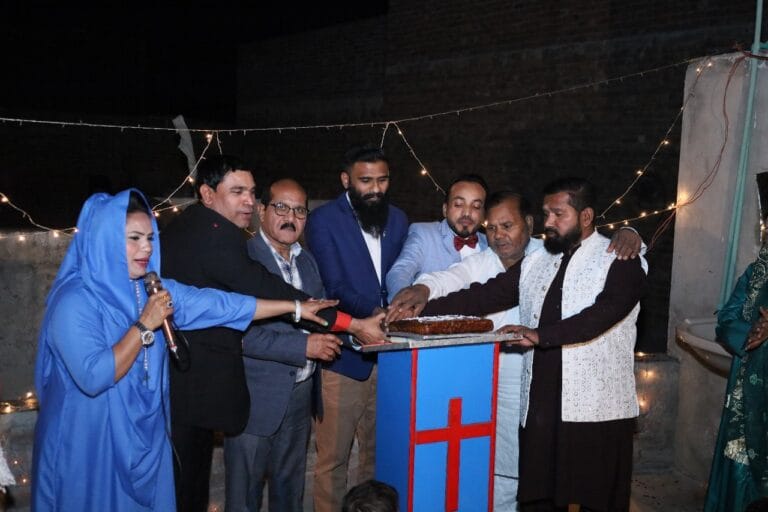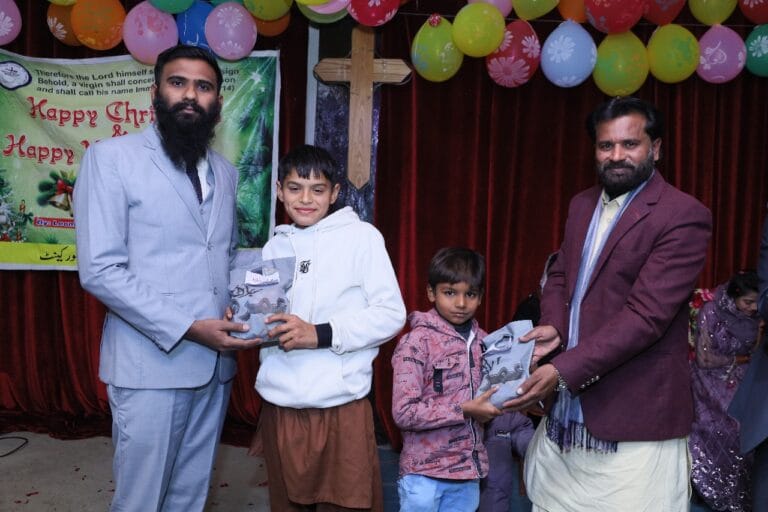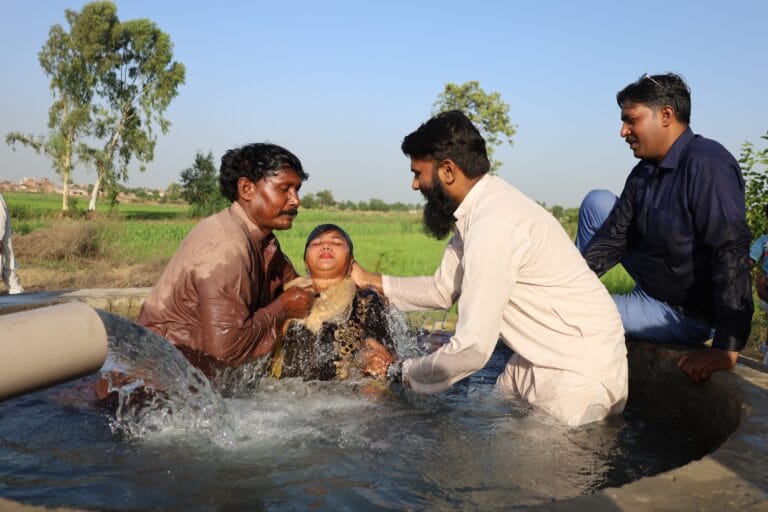How Many Churches in Pakistan — a comprehensive, data-driven guide
Executive summary
Pakistan’s Christian community is diverse and historically rooted, yet the exact number of churches across the country is notoriously difficult to pin down. Public sources report different totals depending on how they define “church.” Conservative, official-style tallies that count registered parishes and church buildings (parishes, denominations, dioceses, formally registered sites) place the number of churches in the low thousands. At the same time, civil-society and research reports describe “thousands of evangelical household/house churches” which are informal, locally-led fellowships that are not always listed in government registries or directories. Together, these realities mean the true number of Christian gatherings (from large cathedrals to very small house fellowships) likely ranges from “several thousand” to a much higher figure if every meeting place is counted.
Key concrete figures from public sources used in this article:
- A UK Home Office country note reported around 2,652 churches recorded nationally (this figure uses the source’s own inclusion rules).
- The provincial reply in Punjab (Oct 2024) reported 3,225 registered churches in Punjab alone.
- The Catholic Church reports roughly 136 parishes across its dioceses (2021 data for Catholic parishes).
- Multiple research and NGO reports explicitly say “thousands of evangelical household churches” have emerged across Pakistan (these are informal/unregistered).
Because the numbers vary by source and definition, this article explains the differences in data, offers a reasoned estimate and ranges, compares denomination- and province-level information where possible, and presents a practical methodology for anyone (church networks, NGOs, researchers) who wants to build a more authoritative national database.
Table of contents
- Short historical background: Christianity in Pakistan
- How “church” is defined — why counting is difficult
- What official/major public sources report (national & provincial)
- Province-by-province picture (what we know and plausible ranges)
- Denominational structure and major networks (Catholic, Church of Pakistan, evangelical/Pentecostal, independent)
- Registered churches vs unregistered / house churches — numbers, nature, and distribution
- Who leads these churches: pastors, house leaders, and training gaps
- Main challenges facing churches in Pakistan (legal, social, violence, bureaucracy)
- Case studies and examples (notable dioceses, church plants and networks, house church movements)
- Methodology — how the figures in this article were compiled (and their limits)
- Practical recommendations for ministries, researchers, and donors who want accurate mapping
- Conclusion: mission opportunities and responsible reporting
- Sources and suggested further reading
1. Short historical background: Christianity in Pakistan
Christianity has a long presence in the geographic region that is now Pakistan. During the British colonial period many Christian institutions — schools, hospitals, and churches — were established. After partition (1947), the Christian communities in Pakistan continued to organize largely around denominational structures: the Roman Catholic Church, the Church of Pakistan (a united Protestant body combining Anglican, Methodist, Presbyterian and other traditions), and a growing number of evangelical and Pentecostal churches.
Over the last several decades, independent evangelical movements and Pentecostal churches have expanded rapidly, often outside older denominational frameworks. This expansion includes classic church buildings and formal parishes, as well as smaller, locally led fellowships and house churches that operate informally for practical and sometimes security reasons. Recent years have seen growth in small “home fellowships” and other informal networks alongside traditional parish structures. These multiple forms of Christian community are part of why national counts differ so much depending on the source and the definition used. (Historical background is summarized in denominational reports and multiple country profiles.)
2. How “church” is defined — why counting is difficult
At the heart of divergent statistics is one simple problem: what counts as a church? Here are the major definitions used by different actors:
- Registered / formal parish or church building: A physical building registered with authorities or with a denominational body (often tallied in government or diocesan records). These are the easiest to count via official records, but they exclude house fellowships and many newer, informal congregations. Punjab’s figure of 3,225 is in this category (registered churches).
- Denominational congregation / parish: A congregation listed by a denominational headquarters. Catholic parishes are often counted this way (e.g., 136 parishes across dioceses).
- House church / household fellowship: Small groups that meet in homes or informal venues. They may be numerous but are often unregistered and thus invisible to governmental tallies. Civil-society and research reports emphasize the growth of these groups.
- Venue listings / business directories: Some publicly available counts scrape “church” listings from online directories and maps. These can both undercount (omitting unlisted meetings) and overcount (including non-church venues that once hosted events). Many directory-scraped totals are partial and should be used cautiously.
Because each source may rely on different definitions, you will see apparent contradictions: a provincial government may report thousands of “registered churches” while a national research note gives a smaller number compiled by another method. That doesn’t necessarily mean one source is wrong — it means they were counting different things. Clear communication in any report must say which definition is being used.
3. What official / major public sources report (national & provincial)
Below are the major public figures and what they actually represent.
National-level summary figures
- UK Home Office (country note, April 2024) — reported around 2,652 churches recorded nationally. The note compiles information from a variety of sources and uses its own descriptive definition; the figure should be seen as a well-researched snapshot rather than an absolute census.
- Open Doors / World Watch and persecution-focused organizations give broader context about Christian population totals and the existence of unregistered gatherings; they do not provide a precise national church tally but document the growth of smaller fellowships.
Province / local official counts
- Punjab — a provincial reply (Punjab Assembly, Oct 2024) states there are 3,225 registered churches in Punjab. This figure is drawn from provincial registration records and likely counts formal, registered places of Christian worship. Because Punjab is the most populous province (and has the largest Christian population), its numbers weigh heavily in any national estimate.
- Sindh — reporting and news articles indicate several hundred registered places of Christian worship; some reporting cited around 500–600 registered churches/places of worship in Sindh depending on the dataset examined. (Local press reporting and directories provide province-level snapshots.)
- Other provinces / territories — public directory data and localized reports list dozens to a few hundred churches in Islamabad Capital Territory, Khyber Pakhtunkhwa, Balochistan and Azad Kashmir. Directory-scraped totals for KP and Balochistan are relatively small (tens to low hundreds) but are likely undercounts because many small or informal fellowships are not publicly listed.
4. Province-by-province picture (what we know and plausible ranges)
Below is a practical way to present province-level numbers, using the best available public data and reasoned ranges to account for uncertainty. Where a single source gives a number, that number is shown; where data is inconsistent, a plausible range is given.
Important: these are estimates intended for contextual use in a blog. They are not an official census.
Punjab
- Official reported / registered churches: 3,225 (provincial figure, Oct 2024).
- Reasoned total (including non-registered and house fellowships): likely 3,500 – 6,000+. Punjab contains the largest share of Pakistan’s Christian population; many house fellowships operate alongside registered parishes.
Sindh
- Reported (various lists & articles): roughly 500–600 registered places in some reports; directories show hundreds of listings.
- Reasoned total (including house churches): ~600 – 1,500 (wide range due to many local informal fellowships).
Islamabad Capital Territory (ICT)
- Directory listings & local reports: around 70–80 listed churches in public directories.
- Reasoned total (including informal groups): ~70 – 120.
Khyber Pakhtunkhwa (KP)
- Directory listings: around 40–50 listed churches in the directories sampled.
- Reasoned total (including house fellowships): ~50 – 300 (house churches may be fewer than in Punjab/Sindh but are present).
Balochistan
- Directory listings: small (teens).
- Reasoned total: ~10 – 100.
Azad Kashmir / Gilgit-Baltistan
- Sparse directory counts; small numbers.
- Reasoned total: few dozen.
National combined picture (registered + unregistered)
- Registered/official counts (conservative): ~2,500 – 4,000 (this range reflects the UK note’s ~2,652 and the provincial registered total reported by Punjab).
- Unregistered/house churches: at least several thousand, plausibly 2,000 – 6,000+ based on NGO/research statements that “thousands” exist.
- Combined (every meeting place small & large): likely several thousand to low tens of thousands, depending on how one counts very small fellowships and Bible-study groups.
5. Denominational structure and major networks
Understanding denominations helps interpret counts and reporting differences.
Roman Catholic Church
- The Catholic Church in Pakistan is organized into dioceses (archdioceses and dioceses) with parishes. As of 2021 reporting, the Catholic Church identified 136 parishes across its dioceses. Catholic counts are relatively straightforward because the diocesan structure records parishes.
Church of Pakistan (United Protestant)
- The Church of Pakistan is a united church combining Anglicans, Methodists, Presbyterians, and others into a national organization with dioceses. It is historically one of the major Protestant structures in Pakistan. The Church of Pakistan’s diocesan network is administratively visible in denominational records, but counts differ when different sources combine or separate congregations by diocesan vs local reporting.
Evangelical / Pentecostal / Independent Churches
- This is the most dynamic and fastest-growing sector. It includes established Pentecostal denominations, evangelical networks, and many independent house churches. Many of these churches intentionally operate outside formal registries or denominational oversight for reasons of flexibility, mission, or safety. Directory scraping tends to undercount them. Civil-society reports emphasize their rapid growth and the difficulty of capturing them in official statistics.
Smaller denominational groups
- Orthodox churches, specific mission bodies, and small denominational churches exist but represent smaller numbers compared to Catholic, Church of Pakistan and evangelical/Pentecostal networks.
6. Registered churches vs unregistered / house churches — numbers, nature, and distribution
This section expands on the core question: how many churches are formally registered, and how many meet informally?
Registered churches
- Registered churches are those with formal legal recognition, denominational rolls, or registration in provincial records. They are easier to count. Examples: Catholic parishes, diocesan parishes of the Church of Pakistan, and formally registered local churches that possess buildings or official registrations. Punjab’s government listing of 3,225 registered churches is a strong example of a provincial registered count.
Unregistered/hous e churches
- Many Christian groups meet in houses, shops, tents, or rented rooms. Many are described in research literature as “evangelical household churches.” These groups often form for evangelism, discipleship, and community support — and sometimes because of pressure or lack of resources to obtain or maintain a dedicated building. Government counts typically exclude them unless they register. NGOs and research groups note that “thousands” of such groups exist, but they rarely publish a precise national figure because the networks are fluid.
Distribution
- House churches are concentrated where Christians are numerous (Punjab, parts of Sindh), but they are also present in smaller numbers nationwide. They are especially common in areas where building a formal church is expensive, where land or permission is difficult to secure, or where smaller groups prefer informal fellowship for evangelistic reasons.
Why unregistered groups matter
- House churches greatly expand the reach of the Gospel beyond official parishes and provide local, contextual discipleship and leadership. But their informal status also makes them vulnerable to security threats (attacks, false allegations), and their leaders often lack formal theological training or legal protection. This dual reality — growth and vulnerability — is central to any realistic portrait of Christianity in Pakistan.
Many of Pakistan’s unregistered churches also function through small, humble gatherings — often in homes, schools, or community centers. Among these, Sunday School Ministries play a vital role in nurturing faith within local neighborhoods. These small Sunday Schools often serve as mini-churches, bringing together children and families for worship, prayer, and Bible teaching where formal church buildings do not exist. Through dedicated teachers and volunteers, these ministries have become a strong foundation for spiritual growth in countless communities.
Learn more about this growing movement of faith through our Sunday School Ministries in Pakistan. We thank God that today, there are thousands of Sunday School Ministries serving as light and hope across the nation.
7. Who leads these churches: pastors, house leaders, and training gaps
Formal pastors and clergy
- Formal churches (Catholic, Church of Pakistan, established Protestant bodies) usually have ordained clergy, parochial structures, and denominational training pipelines (seminaries, Bible schools). These clergy tend to be recorded in denominational rosters.
House church leaders and lay pastors
- House churches are usually led by lay leaders, bivocational pastors, or charismatic local leaders who may have informal training. Many leaders are trained in short-term Bible schools, local mentoring programs, or through experiential apprenticeship. Formal theological training is less common among house church leaders due to cost, access, and language barriers.
Gaps and needs
- There is a significant need for consistent pastoral formation, doctrinal teaching, and leadership development across house and independent church networks. This gap affects discipleship depth, theological stability, and the ability to respond to community needs and persecution. Many NGOs and denominational programs are working on leadership training but demand outstrips supply.
8. Main challenges facing churches in Pakistan
Churches in Pakistan — whether large, registered parishes or small house fellowships — face multiple, overlapping challenges that affect how they form, meet, and report their existence.
Legal and bureaucratic hurdles
- Registering a place of worship, owning land for a church building, or obtaining a formal registration can involve complex legal and bureaucratic processes. Many churches either do not attempt formal registration or are delayed in the process.
Social discrimination and marginalization
- Christians are a religious minority in Pakistan and often face social discrimination that affects education, employment, and civic life. This marginalization can make it difficult for some communities to fund buildings or maintain formal parishes.
Security and persecution
- Persecution, targeted attacks, and social hostility shape how some churches choose to operate — house churches sometimes form to reduce visibility or because meeting publicly carries risk. Research and advocacy groups document violent attacks on church buildings and congregations; this reality drives some communities into more informal and dispersed meeting structures.
Data invisibility
- Because many churches are informal or intentionally low-profile, they are invisible to official datasets, making national counting unreliable. Research reports emphasize that many Christian gatherings intentionally avoid public listing for safety.
Resource constraints
- Many congregations (especially the poorest ones) lack funds to own buildings, pay pastors, or support ministries; this pushes growth into house-level fellowships but also constrains pastoral training and social outreach.
9. Case studies and examples
Below are short, illustrative case studies that show the variety of church life in Pakistan.
Case Study A — A Catholic diocese (parish network)
Catholic dioceses provide a structured network of parishes and institutions (schools, hospitals). The Catholic Church’s record of parishes (approximately 136 as reported in recent data) shows how institutional churches are easier to tally through diocesan reporting. Catholic parishes often provide social services and are more visible in official registries.
Case Study B — Registered urban parish in Lahore or Karachi
Major urban churches (cathedrals, large Protestant or Catholic parishes) are visible in public data and serve hundreds to thousands of worshippers. They are often the first point of contact for official counts and directories.
Case Study C — House church network in rural Punjab
A network of house fellowships in a rural sub-district shows how small groups meet weekly in homes, rotate leadership, and plant other fellowships. These networks often multiply quickly but remain unregistered, making them invisible to government tallies but central to local evangelism and discipleship.
Case Study D — New evangelical church planting movement
Evangelical networks planting churches in peri-urban neighborhoods often start as prayer groups or Bible studies and eventually rent or buy a building if resources allow. Sometimes these transition into registered churches; sometimes they remain intentionally informal.
These case studies show why national counts must combine different data sources to reflect reality.
10. Methodology — how the figures in this article were compiled (and their limits)
This article synthesizes:
- Public government and assembly replies (e.g., Punjab Assembly reply on registered churches).
- Major research and country notes (e.g., UK Home Office country note on Christians in Pakistan).
- Denominational reporting (Catholic parishes, Church of Pakistan context).
- Public directories and scraped listings (useful for cross-checking visible churches but incomplete).
- NGO and NGO-style research that documents house churches and the vulnerabilities of unregistered groups.
Limitations:
- Different sources define “church” differently, leading to incompatible raw totals.
- Directory scraping undercounts unlisted gatherings and may include defunct entries.
- Official provincial registers can vary in comprehensiveness and currency.
- House church networks are fluid and intentionally low-profile in some places, so a national roll-out would require active surveying and denominational cooperation.
Given these realities, the numbers presented in the province-by-province section are intentionally ranges rather than precise counts. Any reputable publication or ministry should present both conservative (registered-only) tallies and expanded (including house churches) estimates, with transparent methodology.
11. Practical recommendations for ministries, researchers, and donors
If you or your organization (like IEM Pakistan) want a more authoritative, actionable map of churches across Pakistan — registered and unregistered — here is a practical plan you can follow. These steps balance feasibility, ethics, and safety.
A. Define your counting rules (first, decide what “church” means)
- Choose clear definitions for each category (registered parish, denominational congregation, house church, Bible-study group). Publish the definitions with any counts.
B. Start with denominational rolls
- Request parish lists from major denominational headquarters: Catholic dioceses, Church of Pakistan dioceses, largest Pentecostal and evangelical networks. This gives a solid baseline of registered congregations. (Catholic parish lists are often the most straightforward; the Catholic Church reported ~136 parishes in recent data.)
C. Obtain provincial official records where possible
- Submit formal data requests to provincial Home Departments / Assemblies (e.g., Punjab’s registry produced a 3,225 figure). These records are official but must be cross-checked and contextualized.
D. Use a grassroots survey for house churches
- Create a short, secure survey (WhatsApp/phone or Google Form) distributed through denominational networks and local pastors to map house fellowships. Emphasize confidentiality and safety in areas of risk.
E. Cross-check with public directories
- Scrape and cross-reference public directories (Google Maps, local directories) to capture visible churches and physical buildings.
F. Publish transparent methodology and ranges
- Because absolute precision is unlikely, publish both conservative (registered-only) and expanded totals (including verified house churches), and show how the numbers were derived.
G. Protect sensitive data
- Especially for house church networks, protect leader identities and exact locations where public disclosure could risk safety.
H. Build a living database and update regularly
- Church data changes as congregations plant or close. Maintain a living database with periodic updates from denominational partners.
I can draft the actual email or formal data-request letters for denominational leaders and provincial departments, and I can prepare a survey script and a secure distribution strategy for mapping house churches (in English + Urdu). Tell me which you want first and I’ll draft it immediately.
12. Conclusion: mission opportunities and responsible reporting
Churches in Pakistan are many-faceted: ancient parishes, denominational networks, dynamic evangelical churches, Pentecostal movements, and thousands of intimate house fellowships. Counting them is not just an academic exercise — it affects pastoral care, mission strategy, resource allocation, and the ability to respond to persecution or disasters. Because of multiple definitions and data gaps, the most honest approach combines careful denominational and provincial data with grassroots surveying of house church networks, and always presents results as ranges with transparent methodology.
If you publish statistics, always state the definitions and the data sources. If you want IEM Pakistan to publish an authoritative piece on this topic, I can help draft an evidence-based report, create a survey instrument, and prepare outreach letters to denominational offices and provincial authorities to build a verified database.
13. Sources and suggested further reading
(Selected public sources used for the figures and context above — major load-bearing references.)
- UK Home Office — Country policy and information note: Christians and Christian converts, Pakistan (April 2024) — reported “around 2,652 churches recorded nationally.”
- Punjab Assembly / The News — provincial reply reporting 3,225 registered churches in Punjab (Oct 2024).
- Catholic Church reporting / diocesan materials (Catholic parish count ~136).
- Directory / scraped lists of churches (RentechDigital / business-directory scraping) — useful for cross-checking visible, listed churches.
- NGO / research reports describing the emergence of thousands of household churches and the vulnerabilities of informal gatherings.
- One Vision Society https://onevisionsociety.org/
